
Increased risk of asthma Asthma risk is increased 300% in children at the age of six years, who are formula fed. Formula fed children are three times more likely to have recurrent wheezing. The evidence is clear and consistent that not breastfeeding puts infants at risk for asthma and atopy.
Increased risk of allergy Infants breast fed for the shortest duration (or never breast fed) have the highest incidence of atopy, eczema, food allergy and respiratory allergy. Eczema, an allergic reaction, is significantly rarer in breast-fed babies. A review of 132 studies on allergy and breastfeeding concluded that breastfeeding appears to help protect children from developing allergies, and that the effect seems to be particularly strong among children whose parents have allergies.
Reduced cognitive development Formula feeding has long-term detrimental effects on a person’s life through its influence on childhood cognitive and educational development, concludes this UK study. Regression analysis was used to determine that breastfeeding was significantly and positively associated with educational levels obtained by age 26 as well as cognitive abilities at age 53 years. (Richards M, Hardy R, Wadsworth ME. Long-tern effects of breast-feeding in a national cohort: educational attainment and midlife cognition function. Publ Health Nutr 5: 631-635, 2002) Exclusively breastfed (without supplements) small for gestational age infants had a significant advantage in cognitive development without compromising growth. Very low-birth weight infants who had never been breastfed were found to have lower test scores in over- all intellectual function, verbal ability, visual-spatial and motor skills than those who had been breastfed.
Increased risk of acute respiratory disease Breastfeeding was one of the key modifiable risk factors for lower respiratory infection in children under five years of age. Formula-fed infants experienced more than three times the severity of respiratory tract illness and required more frequent hospitalization compared to infants who had been breastfed exclusively for four months or more. Formula fed infants had double the rate of respiratory disease.
Increased risk of childhood cancers Formula feeding is known to increase the risk of cancer. This novel study found a significant level of genetic damage in in- fants aged nine to 12 months who were formula fed. The authors speculate that the genetic damage may play a role in the development of cancer in childhood or later life. They concluded that breastfeeding duration of six months or longer may protect against childhood acute leukemia and lymphomas.
Increased altered occlusion Never give artificial nipples of any kind if you want your child to have straight teeth! This is the message from this research on feeding, sucking and dentition. This retrospective study of 1130 preschool children (three to five years of age) looked at the impact of the type of feeding and non-nutritive sucking activity on occlusion in deciduous dentition. Children with non-nutritive sucking activity and who were bottle-fed had more than double the risk of posterior cross-bite, while breastfeeding seems to have a protective effect on development of posterior cross-bite in deciduous dentition.
Increased risk of diabetes Cow’s milk-fed infants had elevated levels of beta-casein antibodies when compared to breast- fed infants. They concluded that breastfeeding for the first four months prevented the production of antibodies and could have a preventive effect on the development of Type 1 diabetes. Early introduction of infant formula, solids and cow’s milk are factors shown to increase the incidence of Type I diabetes later in life. Swedish (517) and Lithuanian (286) children aged 0 to 15 years who were diagnosed with Type I diabetes were compared to non-diabetic controls. The results showed that exclusive breast- feeding for five months and total breastfeeding for longer than seven or nine months are protective against diabetes. Data was collected via questionnaires in a case-control- led study consisting of 868 diabetic Czech children and 1,466 controls. This study too confirms that the risk for type I diabetes decreases with increased duration of breastfeeding. Formula feeding was associated with an increased risk – OR of 1.93. Breastfeeding for 12 months or longer reduced the risk significantly – OR of 0.42.
Increased risk of cardiovascular disease The authors concluded that for children born prematurely, formula feeding increases blood pressure in later life and that this conclusion can be extended to term infants as well. Breastfeeding may have long term benefits for cardiovascular disease by reducing levels of total cholesterol and low-density lipid cholesterol. Studies suggests that early exposure to breast milk may program fat metabolism in later life, resulting in lower blood cholesterol levels and therefore a lower risk of cardiovascular disease.
Increased risk of chronic diseases Formula feeding dramatically increases risk of developing Celiac disease. This disease may be triggered by an autoimmune response when an infant is exposed to a food containing gluten proteins. A team of researchers looked at the breastfeeding patterns of 627 children with celiac disease and at 1254 healthy children to determine the effect of breastfeeding during the time of introduction of gluten-containing foods on the outcome of the development of celiac disease. An astounding 40 per cent risk reduction was reported for the development of celiac disease in children at two years of age or younger for those who were breastfed when dietary gluten was introduced. The effect was even more pronounced in infants who continued to be breastfed after dietary gluten was introduced, the authors noted. Children with CD were breastfed for a signifiantly shorter period of time. Children being breastfed at the time of gluten reduction had a 52 per cent reduction of risk for developing CD compared with children who were not breastfeeding at the time of introduction. continued breastfeeding limits the actual amounts of gluten received. Breastfeeding protects against intestinal infections. Infections can increase the permea- bility of the infant’s gut and therefore allow the passage of gluten into the lamina propria. Others have suggested that breastmilk IgA may reduce the im- mune response to ingested gluten or immune modulation may oc- cur through specific T-cell suppressive effects. Inflammatory bowel disease and Crohn’s disease are other chronic gastrointestinal conditions that are more frequent for those who are formula-fed. A meta-analysis on 17 relevant studies supports the hypothesis that formula feeding is associated with increased risks of Crohn’s disease and ulcerative colitis.
Increased risk of otitis media and ear infections US infants who were exclusively breastfed for four months or more had a 50 per cent reduction of episodes compared to infants who were not breastfed. breastfeeding even for a short period (three months) would significantly reduce the episodes of otitis media during infancy.
Increased risk of obesity 32,200 children aged 39 to 42 months. After elimination of confounding factors, socioeconomic status, birthweight and sex, the prevalence of obesity was significantly higher in the formula-fed children, leading to the conclusion that formula feeding is associated with an increase in childhood obesity risk. Breastfeeding was found to be protective against obesity. The protective effect was greater when the infants were exclusively breastfed.
Increased risk of death by diarrhea In many parts of the world children still die from diarrhea, often due to unclean drinking water. These underdeveloped countries are where the heaviest advertising is pushed by the companies who profit from artificial infant formulas. Compared with exclusive breastfeeding, children who were partially breastfed had a 4.2 times increased risk of death due to diarrheal disease. Formula feeding was associated with a 14.2 times increased risk for death due to diarrheal disease in Brazilian children. (Victora CG, Smith PG, Patrick J, et al. Infant feeding and deaths due to diarrhea: A case-controlled study. Amer J Epidemiol 129: 1032-1041, 1989)
Increased risk of gastrointestinal infections A comparison between infants who received primarily breast- milk during the first 12 months of life and infants who were exclusively formula-fed or who were breastfed for three months or less, found that diarrheal disease was twice as high for the formula-fed infants as for those who were breastfed. Breastfeeding promotion in Belarus significantly reduced the incidence of gastrointestinal infections (by 40 per cent). (Kramer MS, Chalmers B, Hodnett ED, et al. Promotion of Breastfeeding Intervention Trial (PROBIT): A randomized trial in the Republic of Belarus. JAMA 285: 413-420, 2001)
Increased risk of death from acute respiratory infections Children who were partially breastfed or formula fed had a risk of acute respiratory infection death 2.4 times greater than exclusively breastfed infants. If children were predominantly breastfed the risk of death due to acute respiratory infection was similar to that of exclusively breastfed children.
Increased risk of postneonatal death Children who were formula fed and never breastfed had a 21 per cent greater risk of dying in the postneonatal period than those who were breastfed. Longer breastfeeding was associated with lower risk. 16 per cent of neonatal deaths can be prevented if all infants are breastfed from day one and 22 per cent can be prevented if breastfeeding is initiated during the first hour.
Increased risk of side effects of environmental contaminants A Dutch study showed that at six years of age, cognitive development is affected by prenatal exposure to polychlorinated biphenyls (PCBs) and dioxins. An adverse effect of prenatal exposure on neurological outcome was also demonstrated in the formula-fed group but not in the breastfed group. Despite higher PCB exposures from breast milk, the study found at 18 months, 42 months of age, and at six years of age a beneficial effect of breast- feeding on the quality of movements, in terms of fluency, and in cognitive development tests. The data gives evidence that prenatal exposure to PCBs does have subtle negative effects on neurological and cognitive development of the child up to school age. The study also gives evidence that breastfeeding counteracts the adverse developmental effects of PCBs and dioxins.
Increased risk of nutrient deficiency Infants who were fed a soy-based infant formula brand in Israel during 2003 were hospitalized in intensive care units with severe encephalopathy. Two died of cardiomyopathy. Thiamine level of the formula was shown in analysis to be undetectable. The soy-based formula-fed infants admitted with symptoms indicating thiamine deficiency experienced quick improvement when treated with thiamine. (Fattal-Valevski A, Kesler A, Seal B, Nitzan-Kaluski D, Rotstein M, Mestermen R, Tolendano-Alhadef H, Stolovitch C, Hoffman C. Globus O, Eshel G. Outbreak of Life-Threatening Thiamine Deficiency in Infants in Israel Caused by a Defective Soy-Based Formula. Pediatrics 115: 223-238, 2005)
Increased risk of bacterial infections Use of artificial nipples of any kind may expose babies to alarmingly high levels of dangerous bacteria. Passifier and bottle use is associated with a significant increase in bacterial infections, including streptococcus, antibiotic resistant Klebsiella, which causes pneumonia, and MRSA, a staph superbugs that cause hard-to-treat skin and other infections. reports study coauthor R. Tom Glass, DDS, Ph.D., professor of Forensic Sciences, Pathology, and Dental Medicine at Oklahoma State University Center for Health Sciences in Tulsa, Oklahoma.
Increased risk of illness from contaminated formula. Formula fed infants have increased risk of being sickened due to contaminated infant formulas, with bacterial contaminants such as enterobacter and cronobacter and other contaminants such as pesticides , hormones , melamine and botulism.
Academic Articles and further reading:
Akobeng A K et al. Effects of breast feeding on risk of coeliac disease: a
systematic review and meta-analysis of observational studies. Arch Dis
Child 91: 39-43, 2006
Arifeen S, Black RE, Atbeknab G, Baqui A, Caulfield L, Becker S, Exclusive
breastfeeding reduces acute respiratory infection and diarrhea deaths
among infants in Dhaka slums. Pediatrics 108: e67, 2001
Armogida, Sheila A.; Yannaras, Niki M.; Melton, Alton L.; Srivastava, Maya D.
Identification and quantification of innate immune system mediators in
human breast milk. Allergy and Asthma Proc 25: 297-304, 2004
Armstrong, J. et al. Breastfeeding and lowering the risk of childhood
obesity. Lancet 359:2003-2004, 2002
Bachrach VRG, Schwarz E, Bachrach LR. Breastfeeding and the risk of
hospitalization for respiratory disease in infancy. Arch Pediatr Adolesc Med.
157: 237-243, 2003
Baker JL, Gamborg M, Heitmann BL, Lissner L, Sørensen TIA, Rasmussen KM. Breastfeeding reduces postpartum weight retention. Am J Clin Nutr. 88: 1543-1551, 2008
Beaudry M, Dufour R, Marcoux S. Relationship between infant feeding and
infections during the first six months of life. J Pediatr 126: 191-197, 1995
Bener A, Denic S, Galadari S. Longer breast-feeding and protection against
childhood leukaemia and lymphomas. Eur J Cancer 37: 234-238, 2001
Betrán AP, de Onís M, Lauer JA, Villar J. Ecological study of effect of breast feeding on infant mortality in Latin America. BMJ. 2001 Aug 11;323(7308):303–306. [PMC free article] [PubMed]
Boersma ER, Lanting CI. Environmental exposure to polychlorinated
biphenyls (PCBs) and dioxins. Consequences for longterm neurological and
cognitive development of the child. Adv Exp Med Biol 478:271-287, 2000
Broor S, Pandey RM, Ghosh M, Maitreyi RS, Lodha R, Singhal T, Kabra SK. Risk
factors for severe acute lower respiratory tract infection in under-five
children. Indian Pediatr 38: 1361-1369, 2001
Cesar JA, Victora CG, Barros FC, et al. Impact of breastfeeding on admission
for pneumonia during postneonatal period in Brazil: Nested casecontrolled
study. BMJ 318: 1316-1320, 1999
Chen A, Rogan WJ. Breastfeeding and the risk of postneonatal death in the
United States. Pediatrics 113: 435-439, 2004
Chiaffarino F, Pelucchi C, Negri E, Parazzini F, Franceschi S, Talamini R,
Montella M, Ramazzotti V, La Vecchia C. Breastfeeding and the risk of
epithelial ovarian cancer in an Italian population. Gynecol Oncol. 98: 304-
308, 2005
Daniels M C, Adair L S. Breast-feeding influences cognitive development of
Filipino children. J Nutr. 135: 2589-2595, 2005
Dell S, To T. Breastfeeding and Asthma in Young Children. Arch Pediatr
Adolesc Med 155: 1261-1265, 2001
Dewey KG, Heinig MJ, Nommsen-Rivers LA. Differences in morbidity
between breast-fed and formula-fed infants. J Pediatr 126: 696-702, 1995
Duffy LC, Faden H, Wasielewski R, Wolf J, Krystofik D. Exclusive
breastfeeding protects against bacterial colonization and day care
exposure to otitis media. Pediatrics 100: E7, 1997
Duncan B, Ey J, Holberg CJ, Wright AL, Martines F, Taussig LM. Exclusive
breastfeeding for at least 4 months protects against otitis media.
Pediatrics 91: 867-872, 1993
Dundaroz R, Aydin HA, Ulucan H, Baltac V, Denli M, Gokcay E. Preliminary
study on DNA in non-breastfed infants. Ped Internat 44: 127-130, 2002
Edmond KM, Zandoh C, Quigley MA, Amenga-Etego S, Owusu-Agyei S,
Kirkwood BR. Delayed breastfeeding initiation increases risk of neonatal
mortality. Pediatrics 117: 380-386, 2006
Fattal-Valevski A, Kesler A, Seal B, Nitzan-Kaluski D, Rotstein M, Mestermen
R, Tolendano-Alhadef H, Stolovitch C, Hoffman C. Globus O, Eshel G.
Outbreak of Life-Threatening Thiamine Deficiency in Infants in Israel
Caused by a Defective Soy-Based Formula. Pediatrics 115: 223-238, 2005
Fernandes TA, Werneck GL, Hasselmann MH. Prepregnancy Weight, Weight Gain during Pregnancy, and Exclusive Breastfeeding in the First Month of Life in Rio de Janeiro, Brazil. J Hum Lact. 28: 55-61,2012
Ford RPK, Taylor BJ, Mitchell EA, et al. “Breastfeeding and the risk of sudden infant death syndrome. Int J. Epidemiol. 1993;22:885-890, 1993
Frye C, Heinrich J. Trend and predictors of overweight and obesity in East
German children. Int J of Obesity 27: 963-969, 2003
Groer M W. Differences between exclusive breastfeeders, formula-feeders,
and controls: a study of stress, mood and endocrine variables. Biol. Res
Nurs. 7: 106-117, 2005
Guise JM et al. Review of case-controlled studies related to breastfeeding
and reduced risk of childhood leukemia. Pediatrics 116: 724-731, 2005
Hoppu U, Rinne M, Salo-Vaeaenaenen P, Lampi A-M, Piironen V, Isolauri E.
Vitamin C in breast milk may reduce the risk of atopy in the infant. Eur J of
Clin Nutr 59: 123-128, 2005
Ivarsson, A. et al. Breast-Feeding May Protect Against Celiac Disease Am J
Clin Nutr 75: 914-921, 2002
Kac G, Benício MHDA, Velásquez-Meléndez G, Valente JG, Struchiner CJ.
Breastfeeding and postpartum weight retention in a cohort of Brazilian
women. Am J Clin Nutr 79: 487-493, 2004
Kerkhof M, Koopman LP, van Strien RT, et al. Risk factors for atopic
dermatitis in infants at high risk of allergy: The PIAMA study. Clin Exp
Allergy 33: 1336-1341, 2003
Klement E, Cohen RV, Boxman V, Joseph A, Reif s. Breastfeeding and risk of
inflammatory bowel disease: a systematic review with meta-analysis. Am J
Clin Nutr 80: 1342-1352, 2004
Cochi SL, Fleming DW, Hightower AW, et al. “Primary invasive Haemophilus influenzae type b disease: a population-based assessment of risk factors.” J Pediatr 108:997-896, 1986
Kramer MS, Chalmers B, Hodnett ED, et al. Promotion of Breastfeeding
Intervention Trial (PROBIT): A randomized trial in the Republic of Belarus.
JAMA 285: 413-420, 2001
Malcove H et al. Absence of breast-feeding is associated with the risk
of type 1 diabetes: a case-control study in a population with rapidly
increasing incidence. Eur J Pediatr 165: 114-119, 2005
Martin RM, Ness AR, Gunnelle D, Emmet P, Smith GD. Does breast-feeding in
infancy lower blood pressure in childhood? Circulation 109: 1259-1266, 2004
Martin R, Middleton N, Gunnell D, Owen C, Smith G. Breast-Feeding and
Cancer: The Boyd Orr Cohort and a Systematic Review With Meta-Analysis.
Journal of the National Cancer Institute. 97: 1446-1457, 2005
Mitchell EA, Taylor BJ, Ford RPK, et al. Four modifiable and other major risk factors for cot death: the New Zealand Study. J Paediatr Child Health 28 Suppl 1:S3-8, 1992
Monetini L, Cavallo MG, Stefanini L, Ferrazzoli F, Bizzarri C, Marietti G, Curro
V, Cervoni M, Pozzilli P, IMDIAB Group. Bovine beta-casein antibodies in
breast-and bottle-fed infants: their relevance in Type 1 diabetes. Hormone
Metab Res 34: 455-459, 2002
Oddy WH, Peat JK. Breastfeeding, Asthma and Atopic Disease: An
Epidemiological Review of Literature. J Hum Lact 19: 250-261, 2003
Oddy WH, Peat JK, de Klerk NH. Maternal asthma, infant feeding, and the
risk for asthma in childhood. J. Allergy Clin Immunol. 110: 65-67, 2002
Okamura C, Tsubono Y, Ito K, Niikura H, Takano T, Nagase S, Yoshinaga K,
Terada Y, Murakami T, Sato S, Aoki D, Jobo T, Okamura K, Yaegashi N. Tohoku.
Lactation and risk of endometrial cancer in Japan: a case-control study. J
Exp Med 208: 109-115, 2006
Owen GC, Whipcup PH, Odoki JA, Cook DG. Infant feeding and blood
cholesterol: a study in adolescents and systematic review. Pediatrics 110:
597-608, 2002
Rao MR, Hediger ML, Levine RJ, Naficy AB, Vik T. Effect of breastfeeding
on cognitive development of infants born small for gestational age. Arch
Pediatr Adolesc 156: 651-655, 2002
Richards M, Hardy R, Wadsworth ME. Long-tern effects of breast-feeding in
a national cohort: educational attainment and midlife cognition function.
Publ Health Nutr 5: 631-635, 2002
Saarinen UM, Kajosarri M. Breastfeeding as a prophylactic against atopic
disease: Prospective follow-up study until 17 years old. Lancet 346: 1065-
1069, 1995
Sadauskaite-Kuehne V, Ludvigsson J, Padaiga Z, Jasinskiene E, Samuel
U. Longer breastfeeding is an independent protective factor against
development of type I diabetes mellitus in childhood. Diabet Metab Res Rev
20: 150-157, 2004
Singhal A, Cole TJ, Lucas A. Early nutrition in preterm infants and later blood
pressure: two cohorts after randomized trials. The Lancet 357: 413-419, 2001
Smith MM, Durkin M, Hinton VJ, Bellinger D, Kuhn L. Influence of
breastfeeding on cognitive outcomes at age 6-8 year follow-up of very
low-birth weight infants. Am J Epidemiol 158:1075-1082, 2003
Stuebe AM, Rich-Edwards JW, Willett WC, Duration of lactation and
incidence of type 2 diabetes. JAMA 294: 2601-2610, 2005
UK Childhood Cancer Investigators. Breastfeeding and Childhood Cancer. Br
J Cancer 85: 1685-1694, 2001
Van Acker J, de Smet F, Muyldermans G, Bougatef A. Naessens A, Lauwers
S. Outbreak of necrotizing enterocolitis associated with Enterobacter
sakazakii in powdered infant formulas. J Clin Microbiol 39: 293-297, 2001
Victora CG, Smith PG, Patrick J, et al. Infant feeding and deaths due to
diarrhea: A case-controlled study. Amer J Epidemiol 129: 1032-1041, 1989
Vreugedenhill HJI, Van Zanten GA, Brocaar MP, Mulder PGH, Weisglas-
Kuperus, N. Prenatal exposure to polychlorinated biphenols and
breastfeeding: opposing effects on auditory P300 latencies in 9-year old
Dutch children. Devlop Med & Child Neurol 46: 398-405, 2004
Walker, M. J Hum Lact June 1993 vol. 9 no. 2 97-107
Weir E, Powdered infant formula and fatal infection with Enterobacter
sakazakii. CMAJ 166, 2002
Weyerman M et al. Duration of breastfeeding and risk of overweight in
childhood: a prospective birth cohort study from Germany. Int J Obes
advance online publication February 28, 2006
Wright AL, Holberg CJ, Taussig LM, Martinez FD. Relationship of infant
feeding to recurrent wheezing at age 6 years. Arch Pediatr Adolesc Med 149:
758-763, 1995
Young TK, Martens PJ, Taback SP, Sellers EA, Dean HJ, Cheang M, Flett B.
Type 2 diabetes mellitus in children: prenatal and early infancy risk
factors among native Canadians. Arch Pediatr Adolesc Med 156: 651-655, 2002
Effect of breastfeeding on infant and child mortality due to infectious diseases in less developed countries: a pooled analysis. WHO Collaborative Study Team on the Role of Breastfeeding on the Prevention of Infant Mortality. Lancet. 2000 Feb 5;355(9202):451–455. [PubMed]
César JA, Victora CG, Barros FC, Santos IS, Flores JA. Impact of breast feeding on admission for pneumonia during postneonatal period in Brazil: nested case-control study. BMJ. 1999 May 15;318(7194):1316–1320. [PMC free article] [PubMed]
Taylor B, Wadsworth J, Golding J, Butler N. Breast-feeding, bronchitis, and admissions for lower-respiratory illness and gastroenteritis during the first five years. Lancet. 1982 May 29;1(8283):1227–1229. [PubMed]
Wright AL, Holberg CJ, Taussig LM, Martinez FD. Factors influencing the relation of infant feeding to asthma and recurrent wheeze in childhood. Thorax. 2001 Mar;56(3):192–197.[PMC free article] [PubMed]
Howie PW, Forsyth JS, Ogston SA, Clark A, Florey CD. Protective effect of breast feeding against infection. BMJ. 1990 Jan 6;300(6716):11–16. [PMC free article] [PubMed]
Wright AL, Holberg CJ, Martinez FD, Morgan WJ, Taussig LM. Breast feeding and lower respiratory tract illness in the first year of life. Group Health Medical Associates. BMJ. 1989 Oct 14;299(6705):946–949. [PMC free article] [PubMed]
Holberg CJ, Wright AL, Martinez FD, Ray CG, Taussig LM, Lebowitz MD. Risk factors for respiratory syncytial virus-associated lower respiratory illnesses in the first year of life. Am J Epidemiol. 1991 Jun 1;133(11):1135–1151. [PubMed]
Beaudry M, Dufour R, Marcoux S. Relation between infant feeding and infections during the first six months of life. J Pediatr. 1995 Feb;126(2):191–197. [PubMed]
Cushing AH, Samet JM, Lambert WE, Skipper BJ, Hunt WC, Young SA, McLaren LC. Breastfeeding reduces risk of respiratory illness in infants. Am J Epidemiol. 1998 May 1;147(9):863–870. [PubMed]
Saarinen UM, Kajosaari M. Breastfeeding as prophylaxis against atopic disease: prospective follow-up study until 17 years old. Lancet. 1995 Oct 21;346(8982):1065–1069. [PubMed]
Oddy WH, Holt PG, Sly PD, Read AW, Landau LI, Stanley FJ, Kendall GE, Burton PR. Association between breast feeding and asthma in 6 year old children: findings of a prospective birth cohort study. BMJ. 1999 Sep 25;319(7213):815–819. [PMC free article] [PubMed]
Oddy WH, de Klerk NH, Sly PD, Holt PG. The effects of respiratory infections, atopy, and breastfeeding on childhood asthma. Eur Respir J. 2002 May;19(5):899–905. [PubMed]
Newnham JP, Evans SF, Michael CA, Stanley FJ, Landau LI. Effects of frequent ultrasound during pregnancy: a randomised controlled trial. Lancet. 1993 Oct 9;342(8876):887–891. [PubMed]
Marks GB, Dunn SM, Woolcock AJ. An evaluation of an asthma quality of life questionnaire as a measure of change in adults with asthma. J Clin Epidemiol. 1993 Oct;46(10):1103–1111. [PubMed]
Elder DE, Hagan R, Evans SF, Benninger HR, French NP. Hospital admissions in the first year of life in very preterm infants. J Paediatr Child Health. 1999 Apr;35(2):145–150. [PubMed]
Holme CO. Incidence and prevalence of non-specific symptoms and behavioural changes in infants under the age of two years. Br J Gen Pract. 1995 Feb;45(391):65–69. [PMC free article] [PubMed]
Bauchner H, Leventhal JM, Shapiro ED. Studies of breast-feeding and infections. How good is the evidence? JAMA. 1986 Aug 15;256(7):887–892. [PubMed]
Wright AL, Bauer M, Naylor A, Sutcliffe E, Clark L. Increasing breastfeeding rates to reduce infant illness at the community level. Pediatrics. 1998 May;101(5):837–844. [PubMed]
Ball TM, Wright AL. Health care costs of formula-feeding in the first year of life. Pediatrics. 1999 Apr;103(4 Pt 2):870–876. [PubMed]
Fergusson DM, Horwood LJ, Shannon FT, Taylor B. Breast-feeding, gastrointestinal and lower respiratory illness in the first two years. Aust Paediatr J. 1981 Sep;17(3):191–195. [PubMed]
Wright AL, Taussig LM, Ray CG, Harrison HR, Holberg CJ. The Tucson Children’s Respiratory Study. II. Lower respiratory tract illness in the first year of life. Am J Epidemiol. 1989 Jun;129(6):1232–1246. [PubMed]
Paradise JL, Elster BA, Tan L. Evidence in infants with cleft palate that breast milk protects against otitis media. Pediatrics. 1994 Dec;94(6 Pt 1):853–860. [PubMed]
Dewey KG, Heinig MJ, Nommsen-Rivers LA. Differences in morbidity between breast-fed and formula-fed infants. J Pediatr. 1995 May;126(5 Pt 1):696–702. [PubMed]
Eiger MS, Rausen AR, Silverio J. Breast-vs. bottle-feeding. A study of morbidity in upper middle class infants. Clin Pediatr (Phila) 1984 Sep;23(9):492–495. [PubMed]
Chandra RK. Prospective studies of the effect of breast feeding on incidence of infection and allergy. Acta Paediatr Scand. 1979 Sep;68(5):691–694. [PubMed]
Saarinen UM. Prolonged breast feeding as prophylaxis for recurrent otitis media. Acta Paediatr Scand. 1982 Jul;71(4):567–571. [PubMed]
Wilson AC, Forsyth JS, Greene SA, Irvine L, Hau C, Howie PW. Relation of infant diet to childhood health: seven year follow up of cohort of children in Dundee infant feeding study. BMJ.1998 Jan 3;316(7124):21–25. [PMC free article] [PubMed]
Myers MG, Fomon SJ, Koontz FP, McGuinness GA, Lachenbruch PA, Hollingshead R. Respiratory and gastrointestinal illnesses in breast- and formula-fed infants. Am J Dis Child. 1984 Jul;138(7):629–632. [PubMed]
Rubin DH, Leventhal JM, Krasilnikoff PA, Kuo HS, Jekel JF, Weile B, Levee A, Kurzon M, Berget A. Relationship between infant feeding and infectious illness: a prospective study of infants during the first year of life. Pediatrics. 1990 Apr;85(4):464–471. [PubMed]
Jones CA, Warner JO. Breast milk as an alternative source of cytokines for offspring. Clin Exp Allergy. 2000 May;30(5):599–601. [PubMed]
Hasselbalch H, Engelmann MD, Ersboll AK, Jeppesen DL, Fleischer-Michaelsen K. Breast-feeding influences thymic size in late infancy. Eur J Pediatr. 1999 Dec;158(12):964–967. [PubMed]
Hamosh M. Bioactive factors in human milk. Pediatr Clin North Am. 2001 Feb;48(1):69–86.[PubMed]
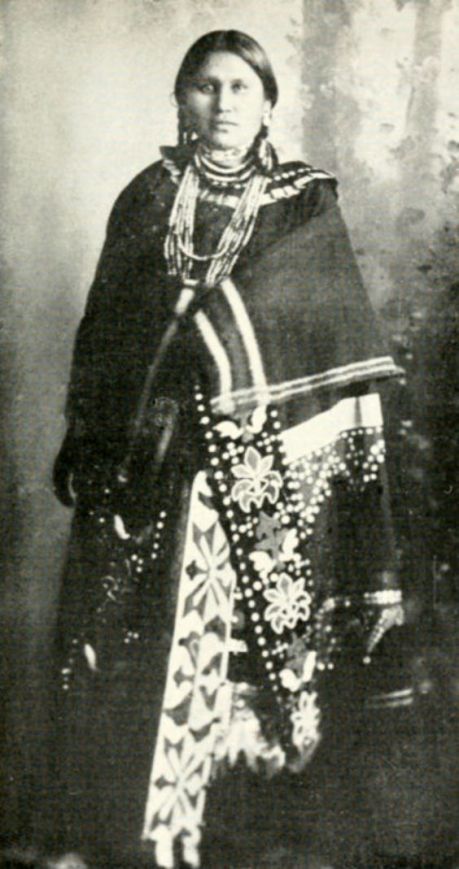

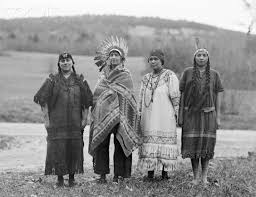 Penobscot girls, no date given.
Penobscot girls, no date given.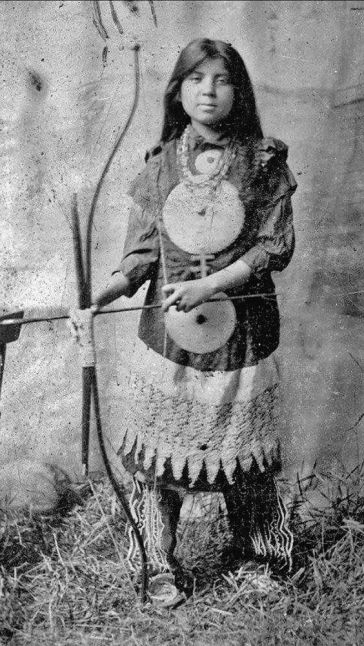 Penobscot girl 1858
Penobscot girl 1858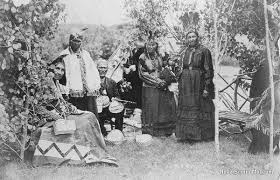
 Chief Big Thunder , Maliseet – 1907
Chief Big Thunder , Maliseet – 1907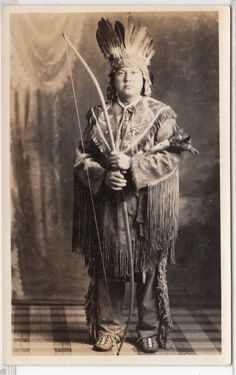 Penobscot , 1937
Penobscot , 1937
 Penobscot Chief Howard Ranco, 1933.
Penobscot Chief Howard Ranco, 1933. Joseph Nicholas, wife Margaret Bassett Nicholas and child, 1921 Indian Village, Maine – Passamaquoddy
Joseph Nicholas, wife Margaret Bassett Nicholas and child, 1921 Indian Village, Maine – Passamaquoddy

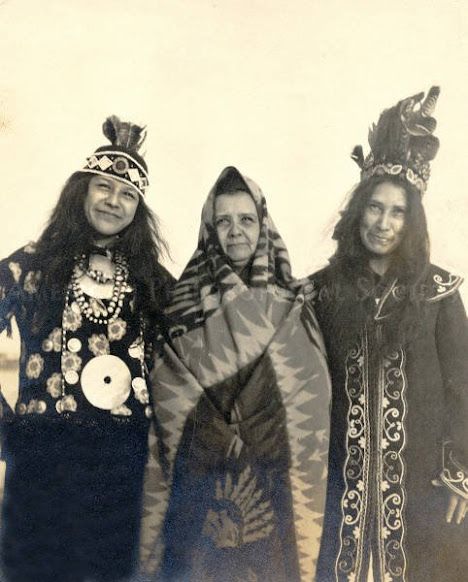

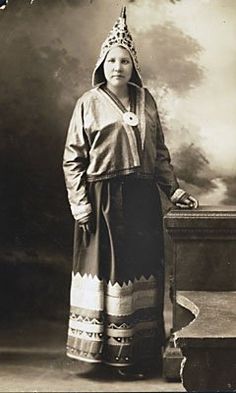
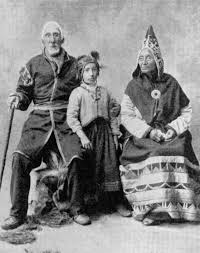 Micmac family photo
Micmac family photo
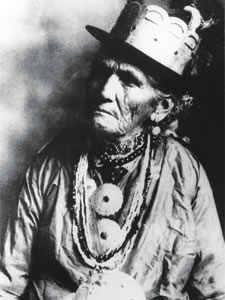
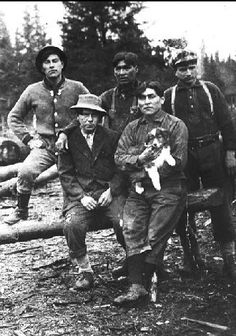
 1871 -Christianne Morris (Micmac) was known for her exquisite work in the traditional arts, supporting her family by the sale of quillwork and basketry.
1871 -Christianne Morris (Micmac) was known for her exquisite work in the traditional arts, supporting her family by the sale of quillwork and basketry. 1866-Gabriel Acquin was known by a variety of names; Sachem Gabe and Noel Gabriel being the most verifiable. He was a Maliseet hunter, guide, interpreter and showman.
1866-Gabriel Acquin was known by a variety of names; Sachem Gabe and Noel Gabriel being the most verifiable. He was a Maliseet hunter, guide, interpreter and showman.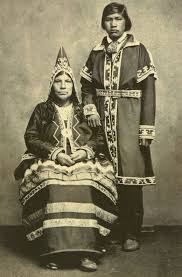
 1912 Cheif Neptune and wife, Passamaquoddy , Eastport
1912 Cheif Neptune and wife, Passamaquoddy , Eastport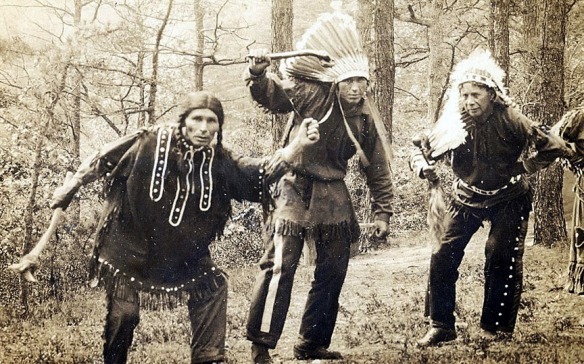 Demonstrating a traditional Passamaquoddy dance in this photo from 1921 are Chief Horace Nicholas (far left), Joseph Nicholas (center), and Joseph Neptune (right).
Demonstrating a traditional Passamaquoddy dance in this photo from 1921 are Chief Horace Nicholas (far left), Joseph Nicholas (center), and Joseph Neptune (right).

























































